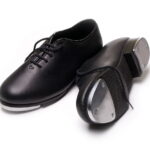
In the scorching heat of summer, protecting our skin from the harmful effects of the sun becomes crucial. Sunscreen acts as a shield against the damaging ultraviolet (UV) rays emitted by the sun.
It not only helps prevent sunburn but also reduces the risk of skin cancer and premature aging.
In this article, we will delve deeper into the importance of sunscreen and how it works to protect our skin like a warrior.
- Understanding the Basics of Sunscreen
Sunscreen is a topical product that comes in various forms such as lotions, creams, gels, sprays, and sticks. Its primary function is to absorb, reflect, or scatter the sun’s UV radiation before it reaches the skin. Sunscreen products are commonly marked with a sun protection factor (SPF) value, which signifies the degree of defense they provide against UVB rays.
- Shielding Against UV Radiation
UV radiation consists of two types: UVA and UVB. UVA rays have longer wavelengths and can penetrate deep into the skin, leading to premature aging, wrinkles, and skin damage. UVB rays have shorter wavelengths and primarily cause sunburn. Sunscreens with broad-spectrum protection shield the skin from both UVA and UVB rays, providing comprehensive defense.
- The Role of SPF in Sunscreen
SPF is a measure of how well a sunscreen protects against UVB rays, which are the main cause of sunburn. The SPF value indicates the length of time it takes for UVB rays to redden the skin when using sunscreen compared to not using any protection at all. For example, an SPF 30 sunscreen allows you to stay in the sun 30 times longer without burning than if you were not wearing any sunscreen.
- Applying Sunscreen Correctly
To maximize the effectiveness of sunscreen, it is crucial to apply it correctly. Here are some key steps to follow:
- Apply sunscreen generously to all exposed areas of the skin, including the face, neck, arms, and legs.
- Use approximately one ounce (about a shot glass full) to cover the entire body.
- Apply sunscreen at least 15-30 minutes before sun exposure to allow it to bind to the skin.
- Reapply sunscreen every two hours, or more frequently if swimming or sweating.
- Additional Sun Protection Measures
While sunscreen is an essential component of sun protection, it should not be the only method employed. Incorporating additional measures can further enhance skin protection:
- Seek shade during the sun’s peak hours, typically between 10 am and 4 pm.
- Wear protective clothing, such as long-sleeved shirts, wide-brimmed hats, and sunglasses with UV protection.
- Use sunscreen in conjunction with other sun-protective measures to create a comprehensive defense against UV radiation.
- Sunscreen for All Ages
Sunscreen is not limited to adults; it is equally important for children and infants. Their delicate skin is more susceptible to sunburn and long-term damage. It is recommended to use sunscreen specially formulated for children with gentle ingredients and high SPF.
- Choosing the Right Sunscreen
With a wide variety of sunscreens available in the market, selecting the right one can be overwhelming. Consider the following factors when choosing sunscreen:
- When selecting a sunscreen, ensure it is a broad-spectrum formula that safeguards against both UVA and UVB
- Aim for a sunscreen with an SPF of 30 or higher to ensure sufficient protection.
- Take into account your skin type and opt for a sunscreen that caters to your specific needs, such as oily, dry, or sensitive skin.
- If you plan to participate in water activities or anticipate sweating, choose a water-resistant sunscreen to maintain its effectiveness over an extended period.
- Sunscreen Myths Debunked
There are several misconceptions surrounding sunscreen. Let’s debunk some common myths:
- Myth: Sunscreen is only necessary on sunny days.
- Fact: UV rays can penetrate through clouds, so sunscreen should be used even on overcast days.
- Myth: People with darker skin tones don’t need sunscreen.
- Fact: While higher levels of melanin provide some natural protection, everyone should use sunscreen to prevent skin damage.
- Myth: Applying sunscreen once is enough for the entire day.
- Fact: Sunscreen should be reapplied every two hours, or more frequently if swimming or sweating.
Conclusion
In conclusion, sunscreen plays a vital role in protecting our skin from the harmful effects of the sun. By understanding its basics, choosing the right sunscreen, and applying it correctly, we can shield our skin like a warrior. Remember to incorporate other sun-protective measures and encourage their use for individuals of all ages. By prioritizing sun protection, we can enjoy the summer months while keeping our skin healthy and safe.





